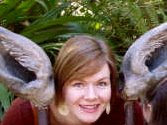Thanks-giving
The holiday was yesterday, our baby girl sat in her high chair and happily ate an entire container of squash while we ate our grown-up meal. She, of course, had no concept that she was involved in a celebration that she will doubtless partake in for years to come, but we were thrilled to have our daughter there. Bwa-bwa-bwa, ma-ma-MA-ma, her contributions to the conversation were genuine and well-stated. Yup, she has been officially babbling for a few weeks now, and it is wonderful to hear. My co-workers were thrilled for me when I reported that she had begun this important communicative stage. But, although I am immensely grateful for my happy and healthy baby, and excited that her communication is progressing perfectly, this entry is not really about all that.
As the year's end rapidly approaches, I'm reminded that I have a major goal that I haven't been able to try out yet. That is the goal of a private practice, a situation where I see only the types of patients that I want to see and structure the treatment exactly as I see fit, rather than being constrained by the typical practices of a large organization. Personally I prefer the adult patients, as the diagnoses and treatments are more interesting. I do enjoy working for Kaiser, and most of my pediatric patients are immensely cute and fun to work with. The adult patients, however, are the ones that I feel passionate about. They are the ones that run through my head late at night as I ponder the best way to help them achieve their goals, and that inspire my internet research.
I enjoy working with adults because they are fully formed people, with an entire life history and distinct personality. They are people who probably had something very precious taken away from them very suddenly, and they are motivated and determined to get it back. These people tend to be enormously appreciative for the guidance that therapy provides. When they say thank you, they shake my hand and look me square in the eye. They are sincere in their appreciation and they express it frequently.
Speech pathology is a helping profession, and those of us in the field are there because we like to help people. That in itself is gratifying, and at the end of the day I know I've done my part to make someone's life a little easier. But like anyone else, it's nice to hear that a job has been well done. It's especially rewarding to hear the thanks from the very person I'm trying to help. So thanks for the thanks, it helps me know that yes, I'm doing something right.
Now to get on with the private practice, so I can do more of what I love with the people who are grateful that I'm doing what I do. Plan begins January 1, with business open date of June-ish. Get to it . . . .

